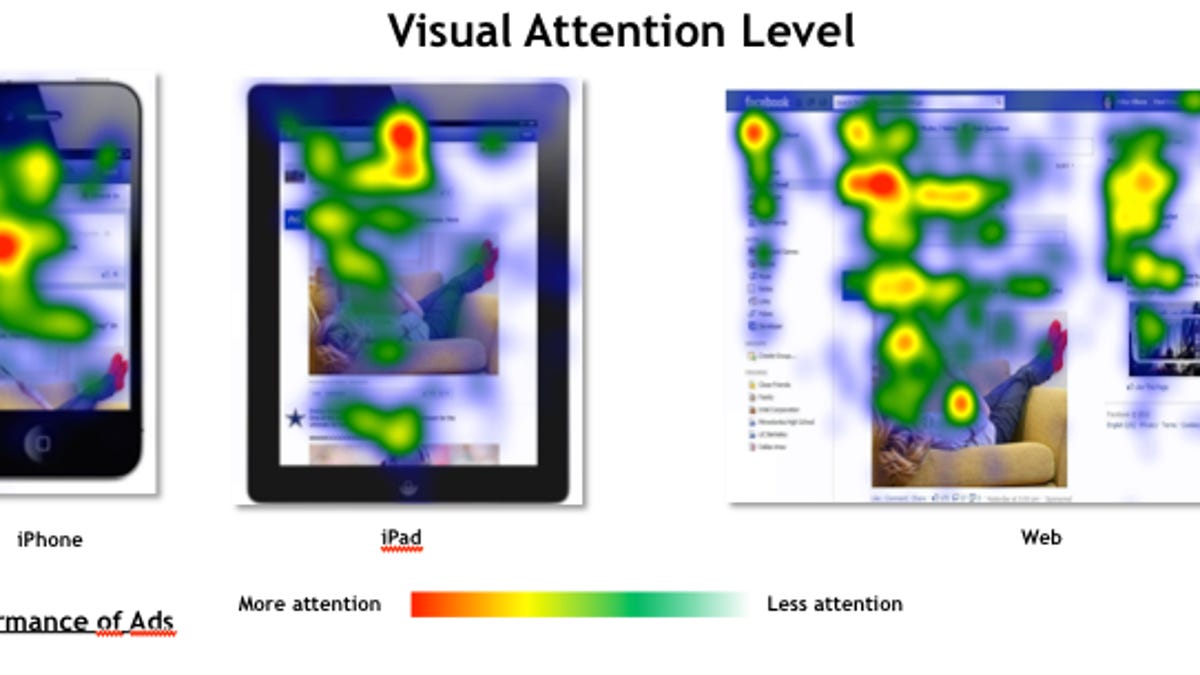What Facebook (and every other site) can learn from eye tracking
One company that tracks eye movement through Webcams says the social network needs to move its ads to the left and up.

With Facebook'sfirst earnings report coming down today, everybody is weighing in on how the social network can do mobile and advertising better, including one company that uses Webcams to track eye movements on sites.
EyeTrackShop uses tracking to help companies with ad placement, with the idea to get the ad in the place where eyeballs naturally go.
"Where your ad goes is so critical and really if you are doing branding, the only way to know where people are looking at is to track it," EyeTrackShop President Jeff Bander said.
This type of study has been around for decades, he said, but now studies can be done by sending links out to test subjects and using Webcams to track the movement. Facebook must also see the value of eye-tracking, having hired an entire eye-tracking company, GazeHawk, earlier this year.
Although Facebook has its own in-house experts, EyeTrackShop recently did a study on Facebook's ad placement for computers and mobile devices at the request of several clients that have brands on Facebook. Bander said click-through rates are not relevant for branding advertising.
"No one sees a Coke ad and clicks to buy a Coke," he said.
The results EyeTrackShop sent to CNET only showed results on iPads, iPhones, and the Web for comparison.
Ads on the tablets actually do well when compared with ads on the Web, according to EyeTrackShop's study. iPad ads are seen by 18 percent more people and people stay on the ads 29 percent longer.
When it comes to smartphone advertising, there just isn't enough real estate to compete, which is why companies need to be strategic about placement, Bander said. The graphic (above) showing the saturation of a person's sight on each platform shows a concentration to the left of the screen on mobile.
Bander said this is because of the way our brains are laid out.
"The right side of the brain processes images and the left side processes text and numbers," he said. "You want to have your images on the left and the text the right, because of you don't, the brain has to flip it. It takes a millisecond, but that counts."
Another piece of advertising advice Bander has for companies is that people are naturally averse to pointy things, so brands should curve the edges of their ads and stay away from placing images of sharp items in ads.
The study seems to contradict an analysis that found Facebook is doing well on mobile, but EyeTrackShop's methods are interesting. Take a look at EyeTrackShop's results in the slideshow and see for yourself.
Correction, 4:35 p.m. PT: The original article incorrectly stated Facebook's relationship with GazeHawk. Additionally, Bander's quote about branding advertising has been clarified.

